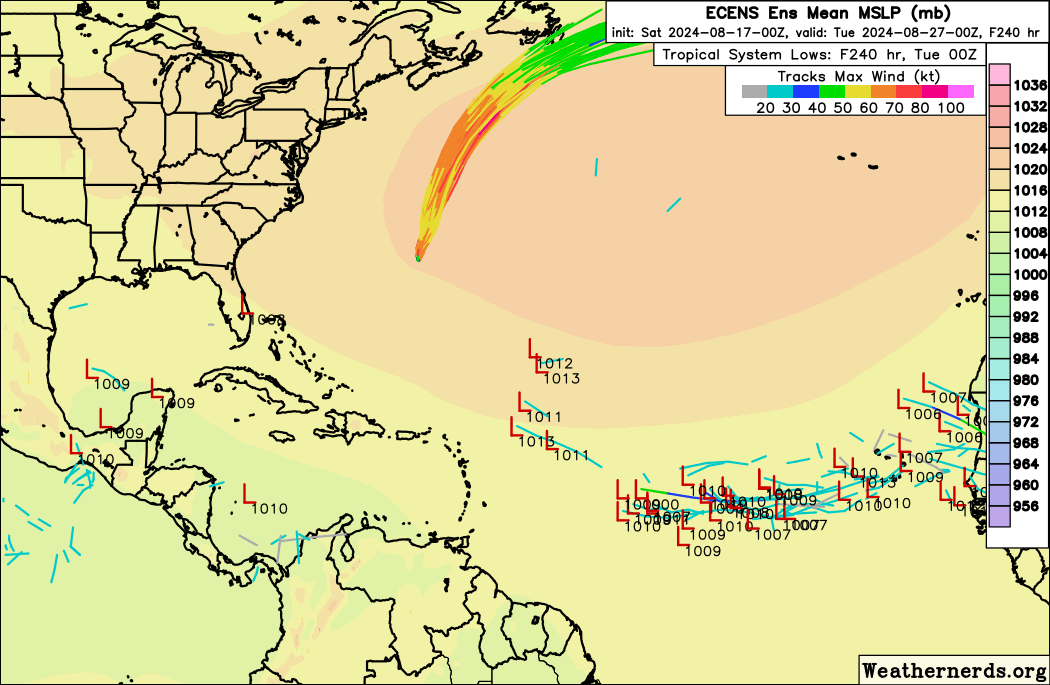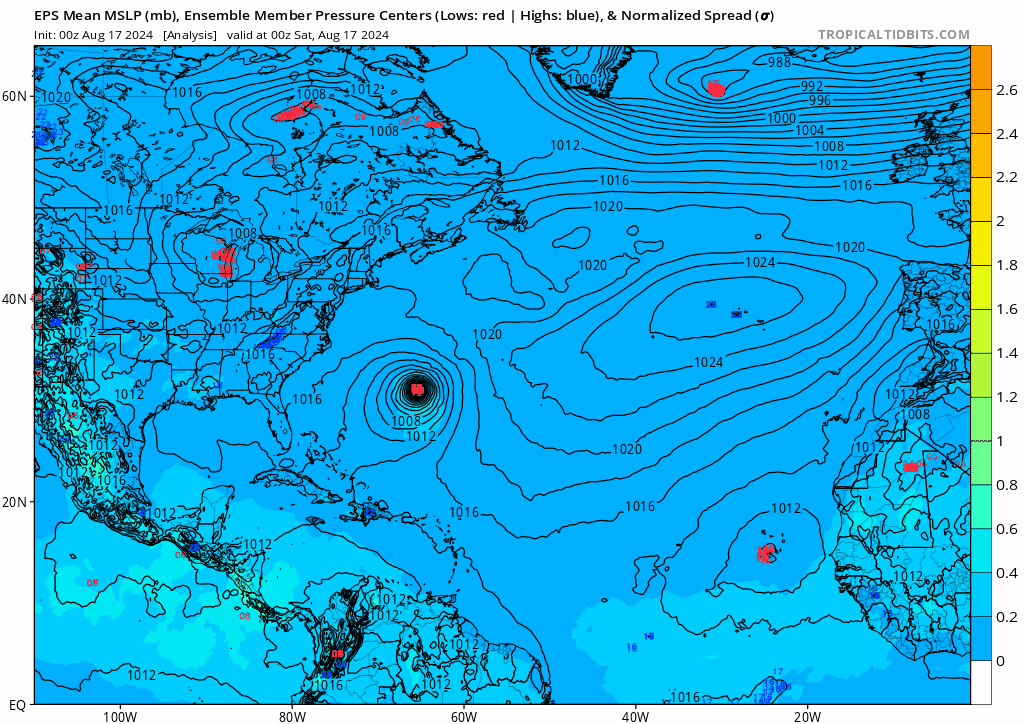I've looked into the African InterTropical Front (ITF) position since 1990, and the mean eastern extent is significantly farther north compared to climatology for the first 10 days of August. The average mean position is currently at 19.95N, with the only year surpassing this being 2023 (20.45). List of years where the eastern extent was this far north:
Code: Select all
2023 - 20.43N
2024 - 19.95N
2013 - 19.73N
2018 - 19.50N
2010 - 19.05N
1994 - 18.95N
2021 - 18.68NFor comparison, here is a chart with precipitable rate anomalies from July 10th - August 10th 2024. The blue line is the observed ITF position for this time period for 2024, the red line is the climatological position of the past 30 years, and the green line is 5 years I've selected where we observed 3+ named storms during this time period (1995, 2005, 2008, 2011, 2020):

Looking at just the eastern extent for the first 10 days of August, we can see how anomalously further north this is:

Why is this so important? The formation of African Easterly Waves (AEWs) originate in the far eastern regions of Africa and propagate along this frontal axis. Not only does this mean a further north track, but a northern amplification of the ITF in this location puts the axis over some of the most arid regions of Africa like Chad:

One culprit has been the velocity potential configuration. Looking at VP 200mb anomaly values for those 5 active years listed above, we can see we had significant forcing off the eastern African coastline:

Compare this to 2024, and we've had the opposite, with more forcing focused to the northeast over southern Asia:

What does this mean for the rest of the hurricane season? Really, not much, but explains how July and the first 2-3 weeks of August we typically don't see robust activity. We can see in the climatological chart for the ITF position that this time period is usually the peak of the northern latitude extent, and the ITF position will being to descend towards the equator. We can also see in some of those years where activity wasn't robust in July/first part of August (see 2010 and 2021 in particular), we can still have significant activity the rest of the season.
























